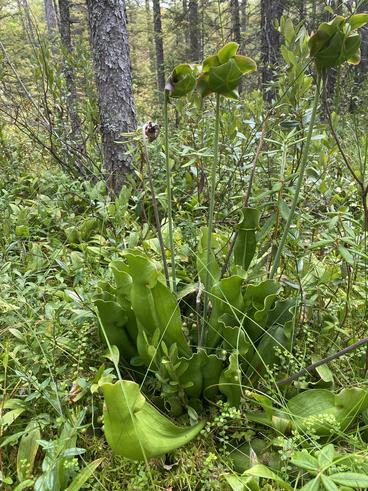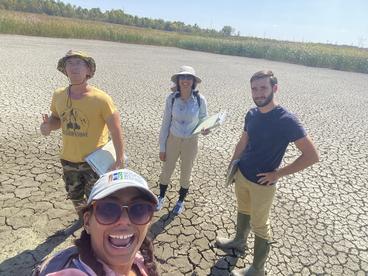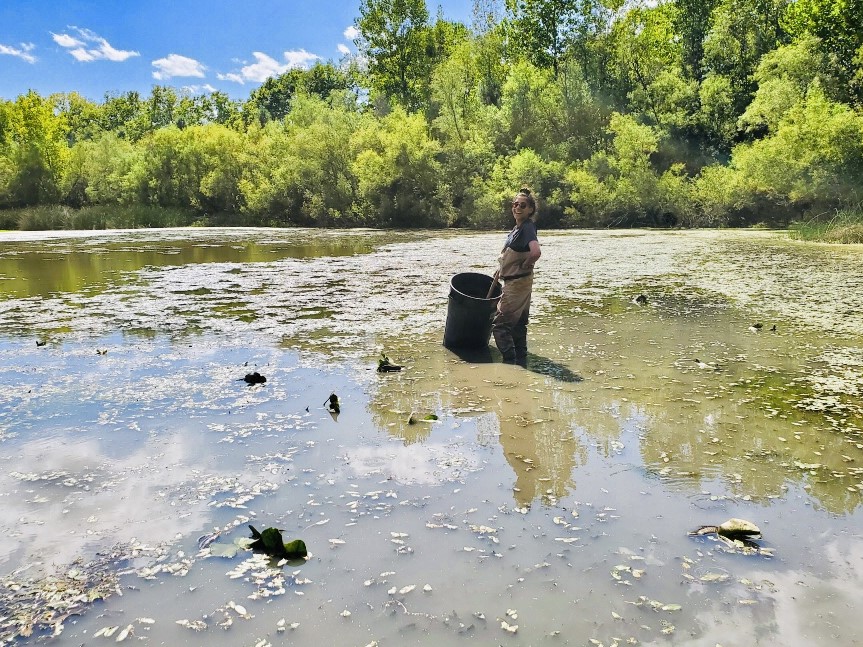By Rohini Vembar, MW CASC Graduate Student

Since my time as an undergraduate intern with the Ohio Department of Transportation, wetlands have completely fascinated me. To this day, I cannot learn enough about them. From the carnivorous plants in nutrient-poor bogs and young salamanders in vernal pools to the stories told by each layer of soil, wetlands are wondrous habitats full of hidden gems. However, they have not always been beloved or understood throughout history.
Wetlands in the US were systematically drained from the mid-19th century through much of the 20th century for agriculture. The fertile wetland soils were great for crop production and the transformation of swampy, buggy, poorly drained areas to easily traversable land made just about everyone happy, or so it was believed. It didn’t take much time for waterfowl hunters as well as those living in and near floodplains to feel the effects of mass drainage. The understanding that wetlands provide irreplaceable ecosystem services resulted in public perception of wetlands to shift, with more and more people understanding the good that these systems contribute to social and natural environments. Many attempted to act to slow wetland losses, though there is still much indecisiveness and controversy surrounding formal wetland protections.

The damage had been done, however. Even with attempts to restore and construct wetlands, additional threats to wetlands have been creeping up in the form of global climate change. A true “wicked problem,” climate change and its impacts are extremely complex with many moving parts and much uncertainty. We have already started seeing considerable impacts to different wetland systems as a result of changing climate patterns, such as destruction of and alteration to coastal wetlands from rising sea levels and the shift in decomposition rates in peatlands with increasing temperatures. As climate patterns continue to shift, both natural and human environments must turn to adaptation planning and increasing landscape and community resilience. Wetlands provide many ecosystem services that may increase resilience, making wetland protection a high priority. While we have been able to better understand how aspects of climate change can impact different types of wetlands generally, there is a lack of inclusion with wetland management.
Climate modeling on global and regional scales can be used to create projections of future climate scenarios based on different heat-trapping gas emission levels, as well as temperature and precipitation-related variables. While these projections are not perfect, they are constantly being updated and provide greater understanding of what our futures may look like. Now I am no expert on climate modeling; however, as a wetland scientist and enthusiast, I strongly believe in the importance of being familiar with potential future climate conditions. Wetlands are dynamic systems and heavily influenced by precipitation and temperature. Wetland assessments, however, generally look at them at a single point in time, unchanging. As we become more familiar with how conditions are expected to change it is imperative that we bring that knowledge into wetland management.
Our lab at the University of Illinois Urbana-Champaign, with the support of the Midwest CASC, is looking into closing the gap between wetland assessment and climate change. Our work on a mapping tool that incorporates wetland distribution, areas important for landscape resilience and connectivity, and climate projections in the Midwest is expected to address this gap and explore future conditions on the watershed level. Though this tool is still in the final stages of development, I have been so excited to see it take shape and to be able to delve deeper into how climate conditions are expected to change both spatially and temporarily.
 | Rohini Vembar (she/her) is pursuing a master’s degree in Natural Resources and Environmental Sciences at the University of Illinois Urbana-Champaign. Her research looks into the development of wetland assessments in the Midwest.
|
